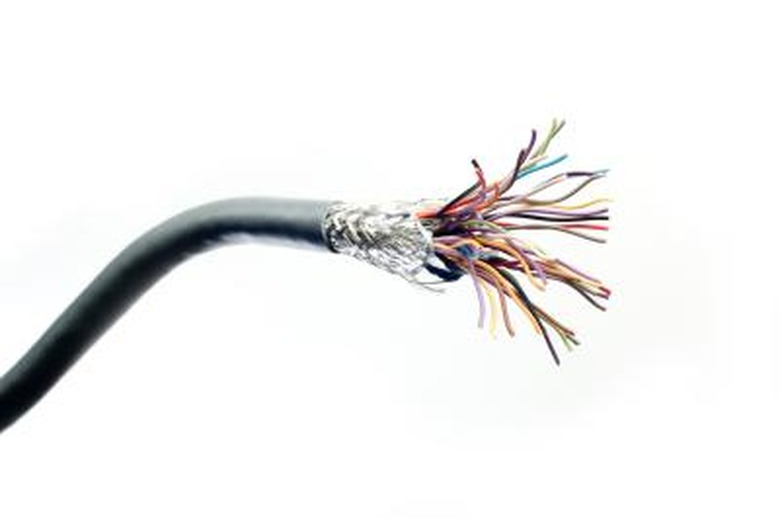Types Of Electrical Cable
An electrical cable, or power cable, is used to transmit electrical power. Electrical cables provide connection and allow power stations, wired computer networks, televisions, telephones and other electricity-powered devices to work. There are many types of electrical cables that differ in configuration, size and performance.
Components of Electrical Cables
Components of Electrical Cables
All electrical cables consist of at least two conducting wires and an outer protective jacket. For medium to high power cables that carry high voltages, the conducting wires within the outer protective jacket may individually be enclosed in insulating sheaths. Electrical conductors are commonly made of copper. Synthetic polymers make the outer jacket and protective, insulating material.
Coaxial Cable
Coaxial Cable
A coaxial electrical cable has a copper-plated core, surrounded by a dielectric insulator. A woven shield of copper surrounds the insulating layer, which is finally wound by an outmost plastic sheath. Coaxial cables differ in size, performance, flexibility, power handling capabilities and cost. They are used to connect home audio and video equipment, television networks and components of a local area network. Hard line, leaky cable, RG/6, twin-axial, biaxial and semi-rigid are types of coaxial cables.
Ribbon Cable
Ribbon Cable
A ribbon electrical cable (also called multi-wire planar electrical cable or flat twin cables) is made up of multiple insulated wires running parallel to each other. These parallel wires allow the simultaneous transmission of multiple signals of data. According to "Optical Communications Essentials," a typical ribbon cable consists of four to 12 wires. It is commonly used to interconnect network devices. Ribbon cables also connect the motherboard with other core CPU (central processing unit) components in computers.
Twisted Pair Cable
Twisted Pair Cable
A twisted pair electrical cable consists of pairs of insulated copper wires (that are color coded), which are twisted around each other. The diameter of each wire ranges from 0.4 to 0.8 mm, and the number of pairs vary in different types of twisted pair cables. The greater the number of pairs, the higher the resistance of the cable will be to external noise and cross-talk. Twisted pair cables are easy to install, flexible and inexpensive. They are used for telephone cabling and to wire local area networks.
Shielded Cable
Shielded Cable
A shielded electrical cable is made of one or more insulated wires that are collectively enclosed by an aluminum Mylar foil or woven braid shielding. The shielding prevents the cable from external radio and power frequency interference, allowing the signal transmission to proceed smoothly. High-voltage power cables are commonly shielded.
Cite This Article
MLA
, Natasha Gilani. "Types Of Electrical Cable" sciencing.com, https://www.sciencing.com/types-electrical-cable-6495444/. 13 March 2018.
APA
, Natasha Gilani. (2018, March 13). Types Of Electrical Cable. sciencing.com. Retrieved from https://www.sciencing.com/types-electrical-cable-6495444/
Chicago
, Natasha Gilani. Types Of Electrical Cable last modified March 24, 2022. https://www.sciencing.com/types-electrical-cable-6495444/
